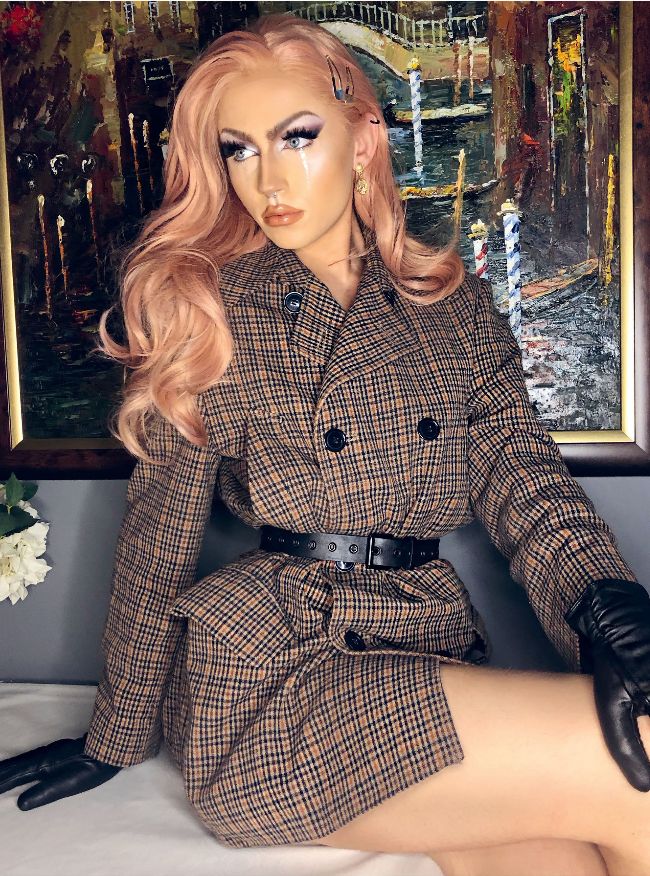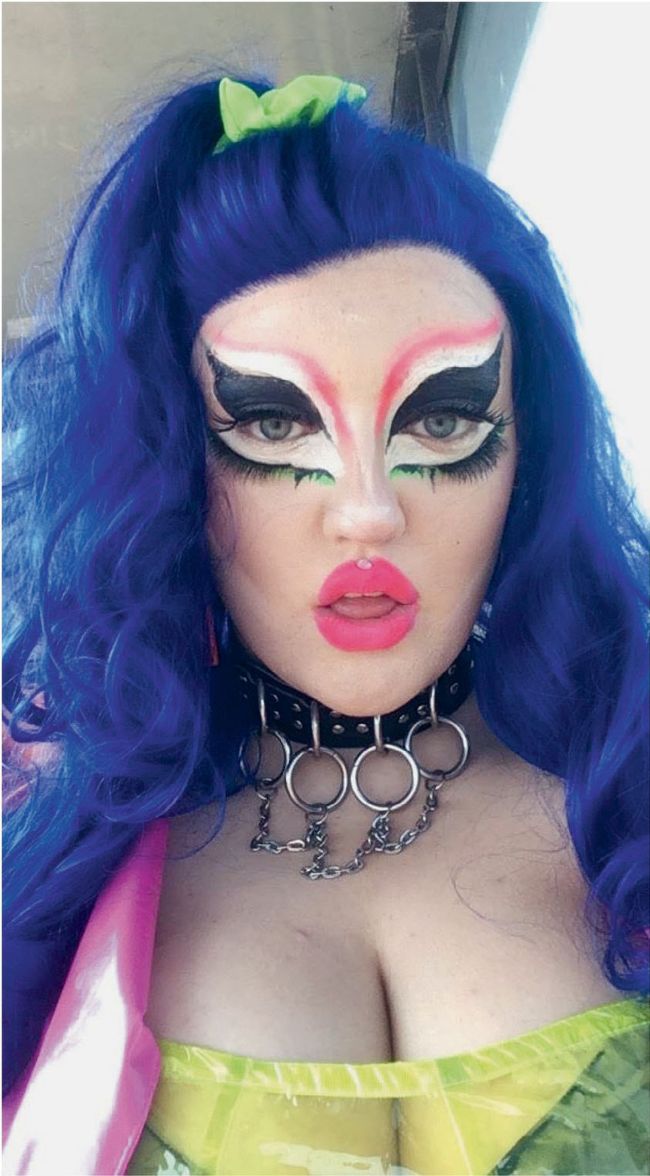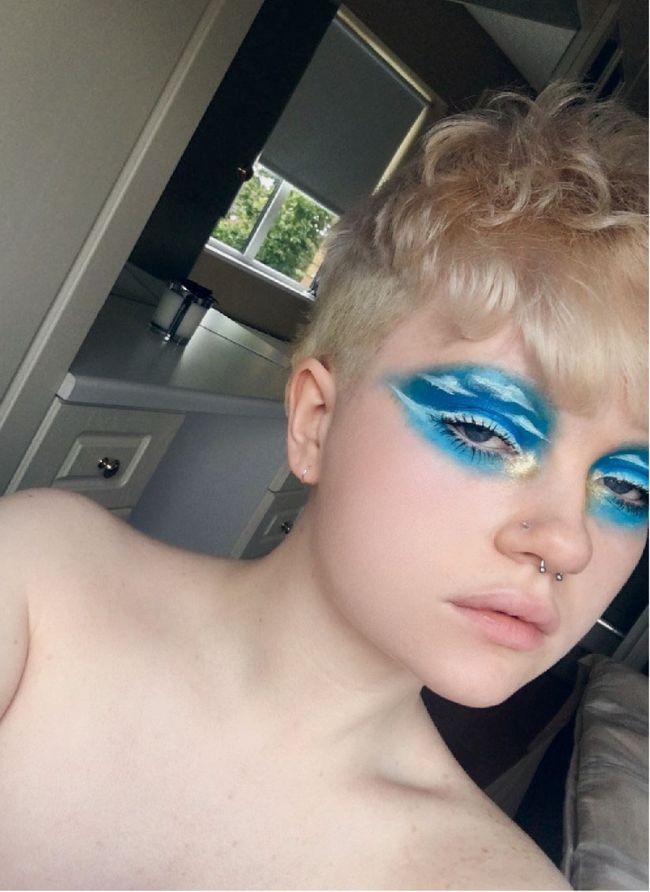Nobody puts baby in the corner
On October 30, Drop Dead Twice will host I’m Baby a night showcasing the immense talents of queens new to the drag scene. Oisin Kenny talks to Nara Hope, organiser of the event, and other baby queens to see what the “new queers on the block” have in store for us.
Oisin Kenny

Viper
Drag culture has erupted into the mainstream in recent years, increasingly growing in both popularity and visibility. Though more and more people are engaging in drag and turning looks of their own, it is still incredibly difficult for young Irish drag queens to avail of performance spaces and grab attention. Starting in drag is to enter into the long shadow of seasoned queens, so it goes without saying that I’m Baby: The New Queers on the Block is a great opportunity for fresh voices to be heard. Let’s hear from some of them.
NARA HOPE
What got me into drag was my need for attention, and my lack of confidence in being myself. I really loved the drag scene, but felt it hard to be an established presence in an area with so many big personalities. When my family got me (a person who couldn’t do makeup for shit) a load of makeup for Christmas, there was really only one thing could do with it. I looked horrendous, but I persevered and now look slightly less horrendous.
The benefits of performing in drag is that for five minutes, you have full rein to do whatever you want to do.
The drawbacks of performing in drag is the judgement you might face. Either from your family when you’re leaving the house, or the bus driver, or whatever. You really have to step back and (say to) yourself it really doesn’t matter what other people think as long as you feel fierce.

Nora Hope
VIPER
It started as just wanting to express myself, through my art, my clothes, and my makeup. I was always attracted to things that were considered more feminine. At first, I thought it was just because of how aesthetically pleasing women’s clothing looked but then I discovered drag and the rest is history.
I’ve never had as much fun as when I’m on stage, pumping with adrenaline. Seeing all the people who support me and the queens around me always makes a warm feeling bloom in my chest.
You hear stories of bigger queens bullying baby queens and I just don’t understand why. They were baby queens once too, they know how it feels to have no one around to help, so why not help other baby queens instead and promote a community of support and acceptance? That’s why I’m so grateful to Nara Hope, she created this show to help us baby queens out and create opportunities for us where others wouldn’t.
PLUTO
The first time got into drag was at a local charity event when the community of Drogheda got together to raise funds for sick children who needed surgery abroad. It really stuck with me and decided wanted to try make a career out of it.
My name is Pluto, and because of its unfair demotion to a dwarf planet, I’ve decided it was more appropriate to veer away from the planet and refer to myself as Pluto the Star! An intergalactic form changing starlet on the rise whose habits include being late, leaving early and staying on your mind.
As a baby queen in the club scene today, I find myself feeling so fortunate that don’t have to deal with all of the drawbacks a working queen had to go through 20 years ago when it wasn’t ‘cool’ to do drag.
VIOLA GAYVIS
I always admired the transformation! Watching Drag Race and seeing these people turn into glamorous creatures always fascinated me. Seeing all those queens of colour made me realise that I can do that! Going to The George and watching Veda, Pixie, Davina and the rest of the girls on stage having so much fun attracted me to it too. I had done drag only once for the Maynooth vs DCU drag competition which surprisingly won!
I take different aspects of masculine features (my glitter beard and suits) and feminine aspects and mash them together to create Viola. I haven’t really fully realised what my style is though. I’m still figuring that out but feel like the glitter beard is going to be here to stay.
Drag in Dublin is booming and growing at such a fast rate. Veda giving me the opportunity to perform at Witchy Wednesday was such a great boost to my confidence and feel it cleared away any doubts I had about doing drag.
KITTEN KABOODLE
The night before Pride, Mockie Ah held a drag show and my friends asked me to do it because they were doing it too. I thought nothing of it really, then when actually got up on stage, hearing everyone cheer and scream just made me think ‘Oh god, now want to make this my life.’ Joking about on stage for people in the same community as me just felt so much safer, away from discrimination and judgement.
As a non-binary queen, people can get confused. It’s really important for people to step away from the gender roles in drag. Not every cis woman wants to be a drag king. Not every cis man wants to be a drag queen. There are so many different people in the world that wouldn’t fiinto the somewhat binary rules of drag and that’s fine. My gender doesn’t change how I’m going to perform for you.
CRYSTAL KNIGHT
I got into drag originally by watching YouTube videos of Pixie Woo, Regina George, Paul Ryder and Victoria Secret in The Dragon. I was way too young to go but I used to think they were everything. Last year finally crashed onto the scene myself and that’s what it’s been since - a total and utter car crash! think my look is somewhere in that punk and alternative style.
You have this network of amazing artsy queer people up and down the country that you become close to through working with them. Being a part of something that’s so huge to gay culture is a great feeling.

Kitten Kaboodle
RIZLA BLUE
My first exposure to drag, like many young queens nowadays, was RuPaul’s Drag Race. Although was a big fan, watching the show actually put me off ever attempting drag myself because didn’t see anyone like me. As I got older and began attending more shows, I discovered that AFAB queens (assigned female at birth) existed and decided that I’d spent long enough getting dressed up in my room and it was time to get out there.
I think the biggest benefit for me is the empowerment I feel and the connections get to make. However, obviously it’s not all fun and games, as an AFAB queen it can be near impossible to get gigs, get experience, or be accepted at all. Even in some LGBT+ spaces, people aren’t quite sure what to think of us.
LUCIHER
I got into drag first because of my mam. She was in The Dragon and The George every weekend with her gay friends and she wished she could do drag.
I went away from the idea for a while due to being a ‘woman’, that drag was for men and if I was to do drag I’d have to be a drag king. It was only when met my current partner that they introduced me to more gender fluid queens on social media and I got this urge to just try it.
(I’m Baby) is going to be my second time ever performing in drag but I’ve been performing on stage all my life. I encourage everyone at one point to try getting into drag, you just feel so confident. It can be hard though to get people to think past the non-binary bit as once I’m in drag I’m very feminine and feel very female but I’m still not a woman myself. I think the whole LGBT+ community has a way to go to understand all the different ways people want to express themselves.
MOMMY COMPLEX
I first got into drag because was trying to get into a drag show and was underage, so figured the bouncer wouldn’t be able to tell my age if my features were indistinguishable because of drag makeup! Later it felt like a way to connect with my queer identity and express my artistic interpretation of gender.
One of the major benefits of doing drag is this kind of extension of childhood into being able to ‘dress up’ as an adult even when it’s not Halloween and being your own canvas for creative exploration. The drawbacks would be the cost, the pain of the corseting/gluing/heels, not to mention familial disapproval. What hurts the most for me is when members of my own queer community try to tell me don’t have a place as a female drag queen or that what do isn’t really drag.
CHE CRAZEE
I kind of gradually gravitated towards it. I started to experiment more with gender and was growing to become more androgynous. Last December, got adopted by my drag mother, Donatella. I was always out wearing all sorts of little lewks so she got me in to the Nova bar to do a number and the second I came off that stage was so hooked. The crowd in Galway are mad, they love drag and I’m addicted to their energy.
With drag becoming more mainstream, it’s a lot easier (and safer) to be a drag artist. I have such major respect for queens who have been in the game since before RuPaul’s Drag Race. While I’ve still experienced a fair share of hate and discrimination, the community which accepts drag artists and the greater LGBT+ spectrum has grown. I love what drag is becoming and firmly believe all drag is valid. I think with greater audiences open to drag performers, we also have the opportunity to use our voices to help raise awareness and support other community members.